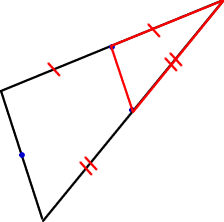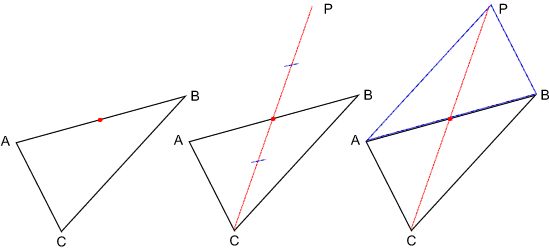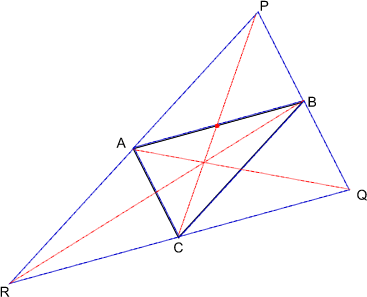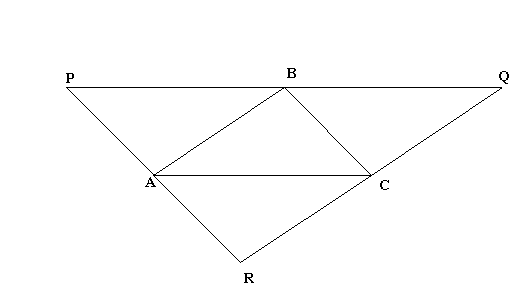Copyright © University of Cambridge. All rights reserved.
'Triangle Midpoints' printed from https://nrich.maths.org/
Show menu
We received two different approaches to the solution. The first is based on what Stephanie from Beecroft School noticed.
Stephanie noticed that the large triangle is made from four congruent triangles, one of which is the triangle joining the midpoints. Stephanie therefore created the larger triangle by making three copies of the smaller one and translated and rotated them into place.
My question is:
How do you know the triangles are congruent? Does the following diagram help?

Chip at King's Ely School and Eli sent in a solution based on Stephanie's ideas.


Like my question above, I want to know how you know the vertices of the larger triangle can be found in this way? Also, if you can convince me you are right, how does the construction to find the midpoint of the sides of the triangle work and why?
The second approach involved parallel lines:
The original triangle PQR can be drawn by constructing a line through A parallel to BC, a line through B parallel to AC and a line through C parallel to AB.
You should then be able to prove that the points A, B and C are the mid-points of PR, PQ and QR.

How do you know the sides of the larger triangle are parallel and how can you construct each of the lines parallel to the sides of the original triangle. Why does the construction work?
Can you tell us more about how these ideas work please?